Michigan
Michigan has the 9th largest Lithuanian community in the USA (30 000). However, arguably, it has the most diverse Lithuanian history and heritage among American states. This is because Michigan has been home to very different Lithuanian-American communities and institutions, all that reflected in amazing Lithuanian sites that still exist all over Michigan.
In this article, we‘ll give a short introduction to each of those Lithuanian areas of Michigan and the stories behind them, as well as links to articles with extensive information. In the second part, we describe the history of Lithuanians in Michigan.
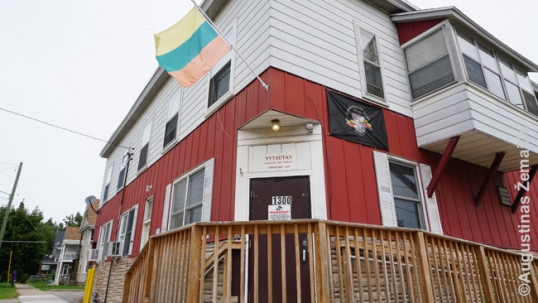
Vytautas Kareivis Aid Society building in Grand Rapids, operating since 1910
Lithuanian areas of Michigan
1. Detroit. By the number of Lithuanian churches erected, the Detroit conurbation falls into all of America‘s top five, with five churches, each of them surrounded by other Lithuanian buildings and memorials. Lithuanians were attracted there mostly by the automobile industry ~ the 1920s-1930s. Sadly, later history has not been kind to Detroit as the city has lost its industry and population. The controversial highway-building campaign led to the demolition of two Lithuanian churches. Racial riots and white flight led to the migration of nearly all Detroit Lithuanians to the suburbs ~1960s-1980s and Lithuanian churches and clubs of the inner city closed down ~1990s-2010s as the generation that still sometimes visited the places of their youth began dying out. A unique new suburban Lithuanian hub developed in Southfield though, combining a new church and secular institutions. Lithuanians also gifted a Lithuanian Room to Wayne State University. A few of the old inner city Lithuanian buildings have been restored albeit they no longer belong to Lithuanians.
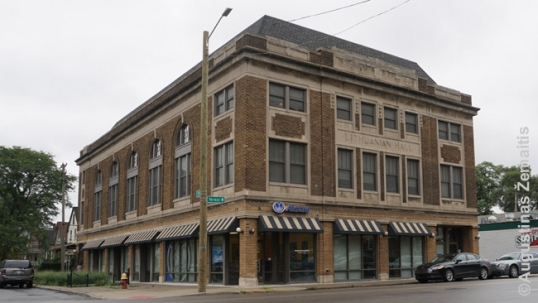
Detroit Lithuanian Hall (well-preserved although no longer Lithuanian-owned)
2. Grand Rapids. While Detroit is among America‘s worst stories of urban decay, Grand Rapids‘ Lithuanian district is among the least affected by it. That neighborhood underwent a slow assimilation (with the Lithuanian language being gradually replaced by English) but no hard hits of white flight. The original Lithuanian church, school, three clubs, and two cemeteries are thus all in operation, offering arguably the best surviving example of the First Wave Lithuanian-American district anywhere in the USA. In Grand Rapids, one may still get inside numerous century-old Lithuanian organizations rather than simply admire the remains of their magnificent buildings at best. Inside, you may still find many descendants of the original ~1920s Grand Rapids Lithuanians, even if these descendants now speak English and are often of only partial Lithuanian descent. By the sheer number of Lithuanians, Grand Rapids within the city limits is now #1 in Michigan (1000 in Grand Rapids vs. 400 in inner city Detroit).
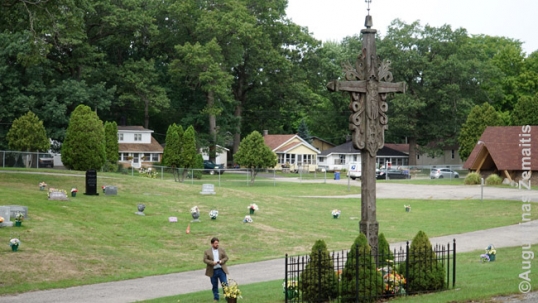
Lithuanian cross in Grand Rapids Lithuanian cemetery
3. Lithuanian camps. Arguably the most impressive Lithuanian heritage sites in Michigan. Originally built ~1950s as places for Lithuanian-American children to spend summers together in a Lithuanian atmosphere, they developed far beyond this original mission. Adults now come there to enjoy the „Lithuanian nature amidst America“, while generations of Lithuanian-American artists have transformed these areas by erecting various highly symbolic Lithuanian monuments and memorials. Camps „Dainava“ and „Pilėnai“ are located near Manchester and camp Rakas near Custer.
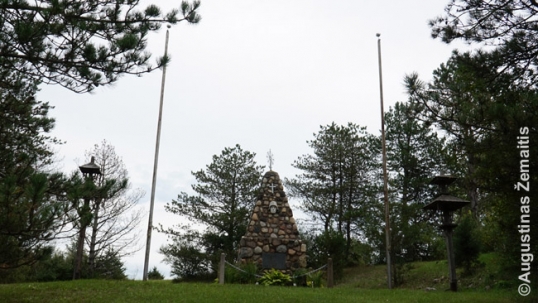
Monument for those who died for Lithuanian freedom at Pilėnai Camp
4. Custer. Lithuanian-Americans invested their wealth into land here to build a kind of „New Lithuania“. While they have not built separate Lithuanian churches or clubs, there were so many of them, that the generic institutions and buildings often have a Lithuanian flavor (e.g. local Catholic church was built by a Lithuanian architect and incorporates Lithuanian details). Lithuanian surnames are still quite common in the area, there are a few Lithuanian street names and memorials, while descendants of settlers still manufacture the Andrulis cheese.
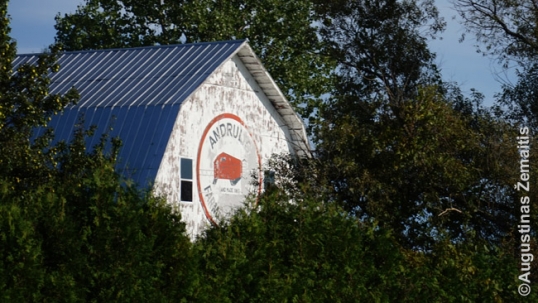
Andrulis cheese factory in Custer area
5. Union Pier. This Lake Michigan resort has more to do with the Chicago Lithuanian community than that of Michigan as it is located on the state border with Indiana. In the 1960s-1980s, Union Pier (together with a few other nearby resorts in Indiana) became the „Lithuanian Riviera“ or the summer capital of Lithuanian America, as Chicago‘s Lithuanians would send their wives and children to spend their summers here, sometimes visiting themselves. There were as many as seven Lithuanian hotels at one time, however, as plane travel rendered tropical Florida or Hawaii easily accessible, the popularity of „Lithuanian Riviera“ plummeted, and the Lithuanian resorts closed down one by one. Closer to Chicago, in Indiana, more of the „Lithuanian Riviera“ spirit remained as the Lithuanian holidaymakers were replaced by Lithuanian retirees and commuters.
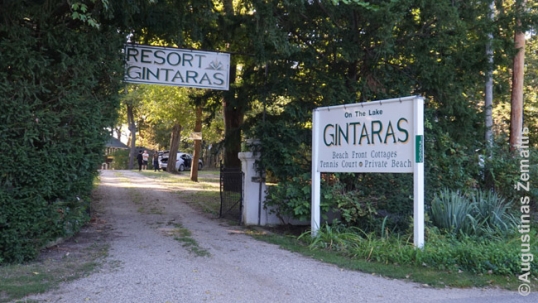
Gintaras Resort on the Lake, the last one of Lithuanian resorts (sold to non-Lithuanians ~2019)
6. Smaller cities. Several smaller cities of Michigan had Lithuanian populations, including Muskegon which still has a Lithuanian club, and Albion where a plaque commemorates Lithuanians. Nowadays, there are Lithuanian communities in many areas of Michigan, however, as these are quite new, there are no historic heritage sites.
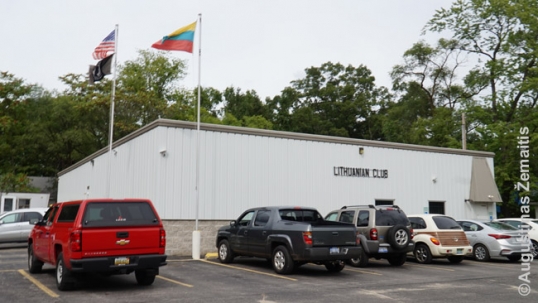
Muskegon Lithuanian club
History of Lithuanians in Michigan
Like elsewhere in America, Lithuanians came to Michigan in three waves.
The largest among them - the First Wave (1869-1914) - however, reached Michigan with a delay. That‘s because at the time these hundreds of thousands of Lithuanians were pouring into the USA, Michigan was still sparsely populated and offered few economic opportunities. So, instead of migrating to Michigan directly, First Wave Lithuanian-Americans typically settled down in Pennsylvania mining villages or the industrial cities of the East Coast, as well as Illinois.
Between 1899 and 1914, for example, only 3427 Lithuanians settled in Michigan, while Pennsylvania received 70019, Illinois - 47339, and New York – 37912. At the time, Grand Rapids was the main hub that attracted Lithuanians to Michigan.
As the roaring 20s were coming, though, the word was spreading about the massive new industrial achievements of Michigan, especially the automobile industry of Detroit. Attracted by higher salaries, Lithuanian-Americans would leave East Coast and Illinois mines and factories for Michigan in their thousands. During 1930, 4879 Lithuanians lived in Detroit alone.
Like in the East Coast, these Lithuanians stayed together, settling in the same districts, and erecting Lithuanian churches and clubs all over Detroit, as well as in a few other Michigan cities.

St. Anthony Lithuanian church. The building to the left is Lithuanian Hall. ©Augustinas Žemaitis.
Far from every seasoned Lithuanian-American of the 1920s-1930s dreamt only of bigger salaries in a more modern factory, however. After spending a decade or more in the US industry and earning enough, some of them hoped to finally realize the dream they had back in Lithuania: buy enough land to make a living as farmers. Michigan attracted these Lithuanians as well, as they have teamed up to buy farmland in the Custer area, effectively establishing America‘s only Lithuanian plurality or even Lithuanian-majority countryside area.

Lithuanian Quilt on a barn symbolises Lithuanian heritage of Custer
The Second Wave of Lithuanian-Americans arguably reinvigorated Michigan's Lithuanian life more than that of any other state. The Second Wave consisted of refugees who were forced to leave Lithuania in 1944 by the Soviet occupation and genocide there. Seeing themselves as exiles and wishing to perpetuate the Lithuanian culture in America even more than the First Wave, the Second Wave Lithuanians effectively established a „shadow Lithuanian state“ that united various Lithuanian institutions all over the USA. In addition to the „old local Lithuanian life“ of the Lithuanian parishes and districts, the Second Wave would establish pan-American Lithuanian hubs that would serve Lithuanians from far beyond and Michigan came to house numerous such hubs.
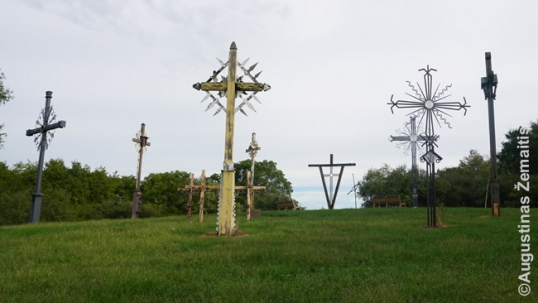
Hill of Corsses of Dainava Camp
In order to pass the Lithuanian language and culture to their children, they established a new type of Lithuanian-American institution, the Lithuanian camp, where Lithuanians (especially the kids) would spend parts of their summers in a Lithuanian atmosphere. The strategic position of Michigan countryside at the center of the Great Lakes area‘s major Lithuanian communities (Chicago, Cleveland, Detroit, Toronto) meant that Michigan was chosen as the place for a whopping three out of five Lithuanian camps in the USA.
The incoming of the Second Wave Lithuanian-Americans almost coincided with the decline of Detroit which was epitomized in its racial riots and white flight. All the Detroit‘s Lithuanian districts suffered greatly, and the inner city Lithuanian churches and clubs closed down (some were demolished to make way for highways that crisscrossed Detroit). However, the energy and patriotism of the Second Wave allowed to the 1972 construction of a new Lithuanian religious and cultural hub in Detroit suburbs, which became one of the last Lithuanian churches to be built in the Americas. In this church, religious space is actually smaller than the secular/ethnic space, accentuating the position of a Lithuanian-American church as a cultural hub that serves far beyond faith.
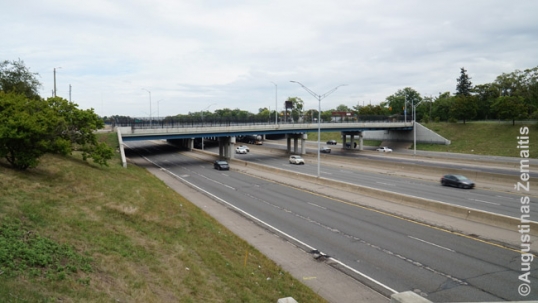
The site of the first Divine Providence Lithuanian church
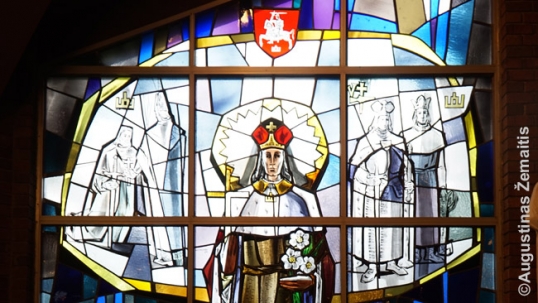
Stained glass window by V.K. Jonynas in the Divine Providence Lithuanian church, erected in 1972
By contrast, in Grand Rapids, the population shift was not as major, allowing the „Old Lithuanian district“ there to survive with many Lithuanian institutions intact, and showing how even in the same state Lithuanian history could develop in different directions.
Meanwhile, on the westernmost tip of Michigan, a Lithuanian resort has been developing in Union Pier ~1960s-1980s. There, Chicago Lithuanians would come to spend their summers or summer weekends and numerous Lithuanian beachside hotels sprung up. Some Lithuanians have settled in the area for good.

Divine Providence Lithuanian church of Southfield near Detroit
After the 1990 independence, the new „Third Wave“ of economic migrants began immigrating, and the Detroit area attracted many of them as well. They joined Michigan‘s largest Lithuanian communities and reinvigorated the key Lithuanian heritage sites: the Detroit area‘s Lithuanian church and the Lithuanian camps. Smaller communities (Custer, Muskegon, Union Pier) received few-if-any new immigrants, however, and Lithuanians who live there are typically descendants of the First Wave or the Second Wave.




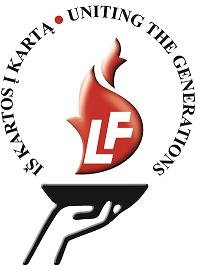

Leave a comment